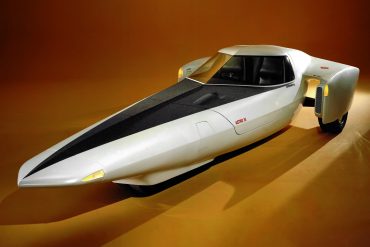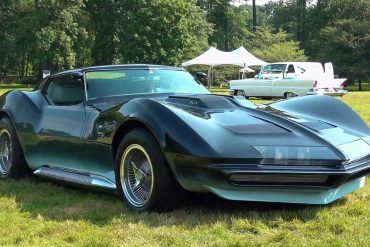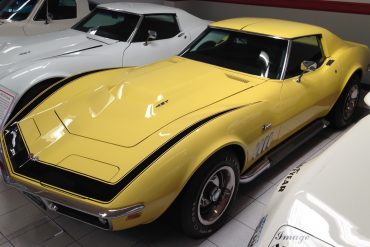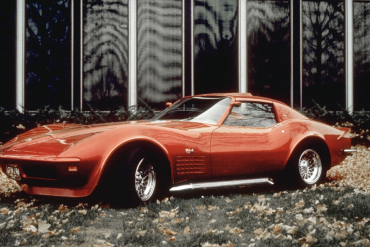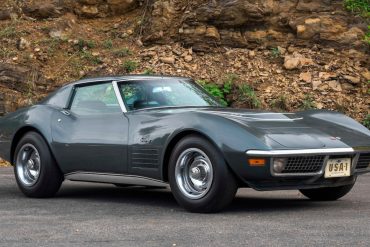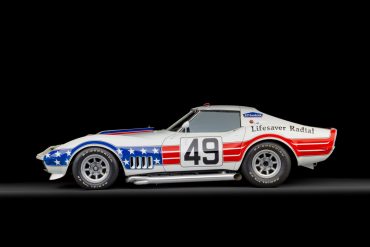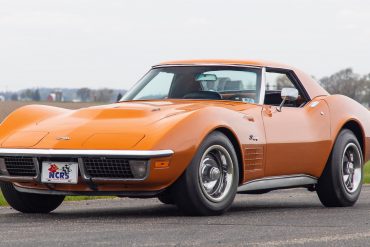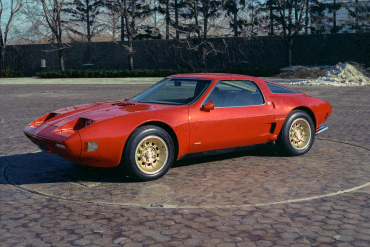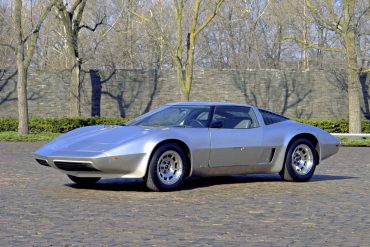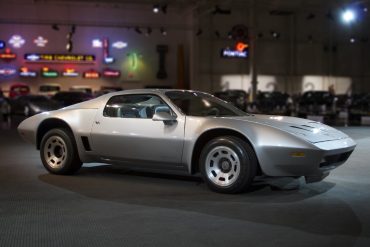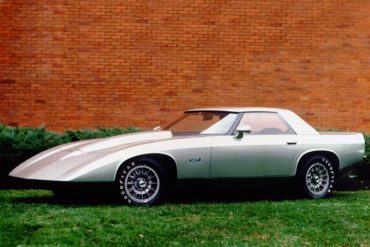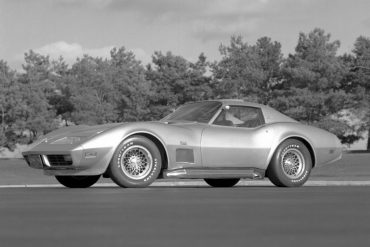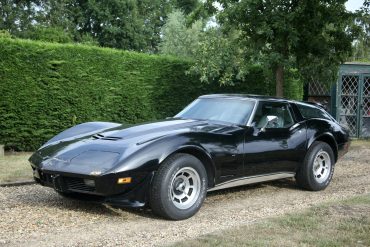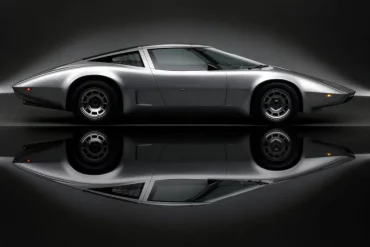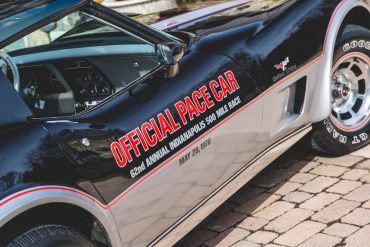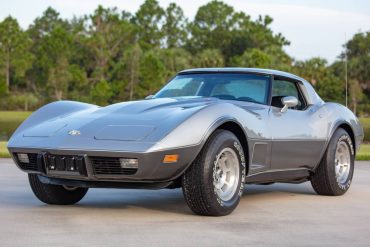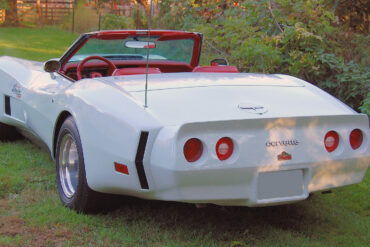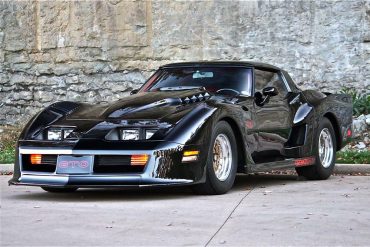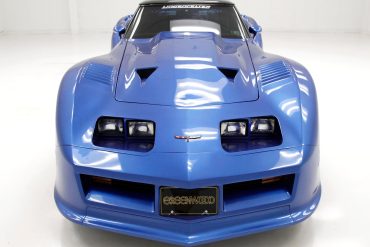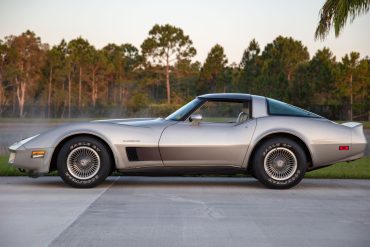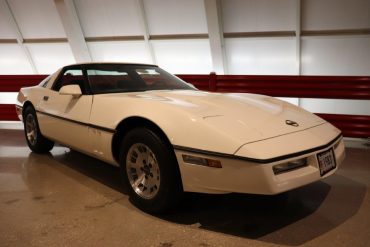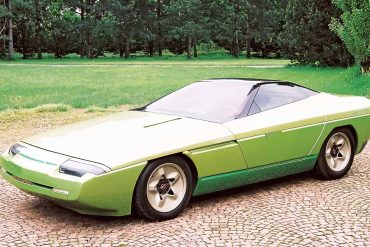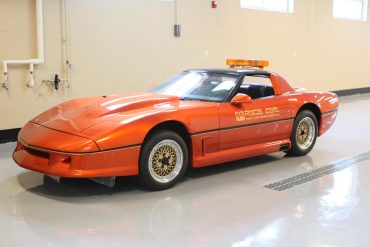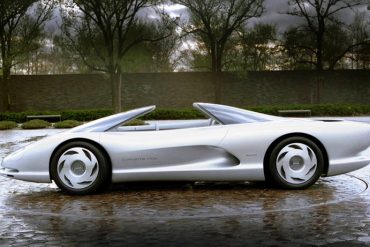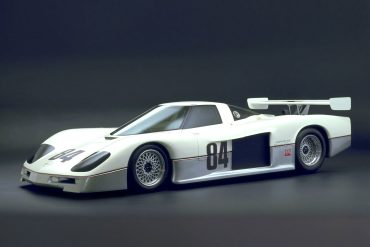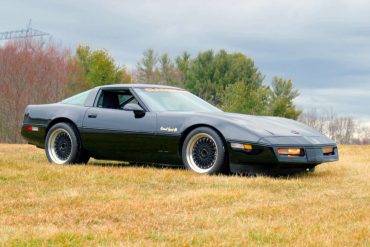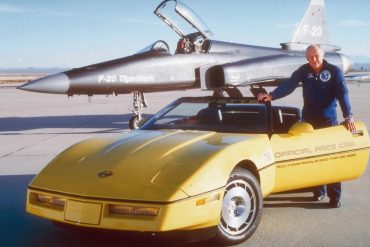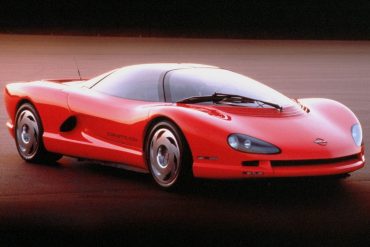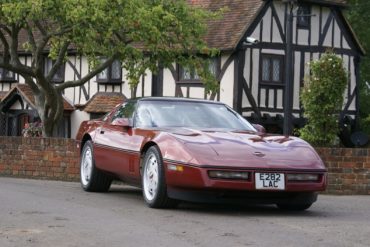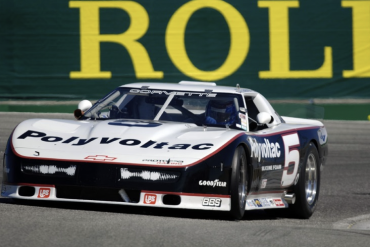Though the first two prototype cars to carry the Astro namesake were relatively well known, the third entry in this conceptual saga was somewhat obscure and significantly more bizarre. At the 1969 Chicago Motor Show, Chevrolet unveiled the Astro III which was a gas-turbine prototype that featured a tricycle wheel arrangement.
The Manta Ray was actually the 1965 Mako Shark II (XP-830) with a few upgrades, so it featured many of the Mako II's outward features, such as side exhausts and a lower-body (along the rocker panels) silver paint job. The front end had a pointed chin spoiler and the headlights used 2 banks of 3 quartz-halogen lights.
In 1969, Chevrolet changed the perception of Corvette forever by introducing the ultra-powerful ZL-1 Corvette with a 427 CI engine producing 585 horsepower! The 1969 ZL-1 Corvette came equipped with an entirely new big-block engine option that produced more horsepower than any Corvette that had come before it. Any Corvette, when ordered with RPO ZL1, came fitted with an all-aluminum 427 C.I. engine that featured a dry-sump oil system and which weight approximately 100 pounds less.
Only Bill Mitchell could get away with this. Bill always managed to have a hot daily ride. Engineering prototypes that weren't street-legal stayed behind the fence, but many of the show car Corvettes managed to go home with Bill. His usual statement on his "design study" cars was, "This thing runs like a bear!" For the Mulsanne Bill added, "This is the best Stingray ever."
Did you know that the earliest ZR1 Corvettes came into existence long before any of these later iterations? If not, then take a few minutes to acquaint yourself with one the rarest small-block production Corvettes of all time - the 1970-1972 Corvette ZR1. From 1970 to 1972, Chevrolet offered the ZR1 Special Engine Package, which featured a small-block LT1 engine.
When one of his cars was severely damaged in 1972, John Greenwood converted his 1969 L88 Convertible into a formidable race car. Included as the formidable ZL1 engine with 750 bhp on tap. Other modifications included a rear spoiler, quick replacement radiator and camber adjusters. At Le Mans, this car set the GT-class record for top speed down the Le Mans straight with 215 mph.
Finally in 1971, both the ZR1 and ZR2 packages were offered side by side as initially intended. The solid lifter, 350 cubic-inch LT-1 found under the hood of the ZR1 featured a ‘178’ high-performance camshaft and a 780 CFM Holley four-barrel carburetor, which resided atop a specialized aluminum intake. The LT-1 featured a reduced compression ratio of 9.0:1 for the 1971 production year, relative to 11.0:1 specified the year prior.
This little concept mounted a 180-horse Wankel transversely, driving a new automatic transaxle being developed for the forthcoming X-body Citation. Designed by GM's Experimental Studio and built in 6 months on a modified Porsche 914 chassis by Pininfarina, the 2-Rotor made its debut at the 1973 Frankfurt show.
One of the most beautiful concept cars created by GM was the XP-822 later called the Aerovette. Zora Arkus Duntov and his engineers had originally built two predecessors during 1969. John DeLorean, Chevrolet's general manager, felt the program was too expensive and canceled the car.
The XP-895 was one in a series of experimental Corvettes built to explore alternative engine placements and chassis layouts. This vehicle features an 400 cid small block V8 mounted transversely in a mid-engine position. It utilizes a Turbo Hydramatic transmission via a bevel gear box. The body panels are all aluminum.
The 1973 Chevrolet XP-898 concept car was built with a frameless fiberglass foam sandwich body and chassis. This two-seater sports coupe offered a unique look at alternative engineering approaches to future techniques in design and manufacturing. The entire body consisted of four lightweight fiberglass outer body panels.
Chevrolet Corvette Mulsanne Showcar, 1974. Created by Bill Mitchell, the Mulsanne was a development of several previous Corvette “specials”, the 1969 Aero and the 1970 Scirocco. By 1974 it had been bored out to 454 ci and fitted with an experimental Rochester fuel injection system, it also had a periscope rearview mirror system.
Greenwood didn’t just build Corvettes for the track, constructing a variety of different street car kits over the years. The story goes that the original ’wagon concept was commisioned by a drummer who wanted a Vette with enough cargo space to haul his drums to various gigs. Since the demise of the Corvette trunk, easily accessible cargo areas were definitely on the wish list for many enthusiasts. Chuck Miller designed and built this first Shark-era Sportwagon.
In 1977, GM chairman Thomas Murphy gave the Aero-vette the green light. It was approved for production, and slated to be released in 1980. Despite being greenlit for 1980 production as the upcoming C4 Corvette, Arkus-Duntov's replacement Dave McLellan decided for a number of reasons (cost and tradition among them) to stick with the Corvette's tried and true front-engine configuration
1978 was significant because it marked the cars 25th anniversary of production. Recognizing the achievement of manufacturing a car for a quarter-century, Chevrolet commemorated this accomplishment by introducing two special-edition Corvette that year. The first of these was known as the "Silver Anniversary" edition Corvette. It featured a two-tone silver over gray exterior with special pin-striping and special "25th Anniversary" badging.
The 1978 Silver Anniversary Edition Corvette was developed to offer consumers a “collectible” model that commemorated one of Corvette’s milestone production anniversaries (its twenty-fifth anniversary in this case) in a way that had ever been done previously with any Corvette model year that had come before it. The car was mechanically identical to 1978 counterparts.
The Duntov Turbo was built as a partnership between American Custom Industries (ACI), a company known for building replacement Corvette body panels, and Zora Arkus-Duntov. It was developed as a highly-stylized convertible sports car based on the production model Corvette. Each of the special Duntov Turbo's also came with a turbocharged V8.
The major differences between the 1980 and 1982 Daytona and the 1981 GTO are the hood, the tops of the rear fenders, and the rear spoiler/bumper cover. The Daytona had an elaborate, short vertical fin on top of the rear fender that turned several turns “in and back,” flowing to the wide, long, table-like rear spoiler. The GTO’s rear fenders pontoons are the same as.
What you see before you is a 1982 Chevrolet Corvette that has been fitted with a rare Greenwood Daytona body kit. The most extreme of the Greenwood brothers' kits, the Daytona body kit is a highly sought-after modification that was developed by race-winning specialists Burt and John Greenwood.
To celebrate the departure of the third-generation Corvette, Chevrolet decided to offer a final commemorative “Collectors Edition” model. However, recalling their experience with the 1978 Pace Car Replicas it was decided that the 1982 Collector Edition Corvettes would be built only “as needed” to satisfy customer orders and that they would get unique vehicle identification plates to help deter someone from turning a standard car into a Collectors Edition knock-off.
Within the National Corvette Museum's Skydome sits the only remaining 1983 Corvette; a car best characterized as a survivor, in every sense of the word. According to the Macmillan Dictionary, a survivor is, "someone or something that still exists after every other member of a group has died or been destroyed." This as it may, the 1983 Corvette lives up to this title.
In 1983, Bertone began to explore the possibility of approaching the US market with the Ramarro, an exercise in applied technology around mass-produced mechanics. The Ramarro, which means "green lizard" in Italian, was created on the chassis of the well-known Chevrolet Corvette, and the underlying concept aimed to modify the layout of the mechanical components.
The 1984 PPG Indy Pace Car Corvette was special from the very beginning- in several ways. Initially, it was created as a one-off concept car that would be designated as one of the official Pace Cars for the PPG Indy Car World Series of races. It was custom-built by PPG in cooperation with the Chevrolet Division of General Motors. The 205 HP 350 was replaced by a 450hp, 401 cubic-inch V-8.
The first of these cars was the 1985 Corvette Indy Concept vehicle. It was developed as a “pushmobile,” meaning that it was a non-functioning, full-size clay mockup that was developed to test market interest in the concept. The car featured the same mid-engine configuration that Zora Arkus-Duntov had always envisioned for the Corvette program.
A Corvette in name only, the Corvette GTP (Grand Touring Prototype) was one of the fastest and most exotic race cars ever to wear a red Bowtie. Based on an English Lola T600 chassis and powered by an all-American turbocharged Chevy V6, the mid-engined racer was a rocketship. At full boost, the Corvette GTP's 3.4-liter (209ci) V6 pumped out more than 1,000 horsepower.
When Dick Guldstrand introduced the GS80 series in 1986, the car was targeted specifically at Pro-Solo and autocross enthusiasts. He knew all about the needs of these groups, as he was a longtime provider of performance upgrades for the C3 and a direct supporter of a small team of racers from the Western Council of Corvette Clubs. Up to this point, Dick had basically been a tuner. With the intro of the GS80 he was venturing into the realm of small-volume manufacturing.
The big news for 1986 was that a Corvette would pace the Indy 500 for the second time. Retired General Chuck Yeager was enjoying celebrity status as a result of the book and movie, “The Right Stuff.” But Chevrolet was still smarting from the heavy criticism over the ‘78 Corvette Pace Car debacle and decided that all 1986 Corvette convertibles were designated as “Pace Car Replica”.
The 1986 Corvette Indy Prototype was developed beyond clay modeling to the point of a fully-functioning, drivable car, though it was clearly understood that this car would never evolve beyond the prototype stage. Like the clay mock-up before it, development of the mid-engine Indy prototype began in 1985, pulling design cues from its predecessor.
This is no ordinary C4 coupe, but a GM Engineering test mule with VIN plate EX4607 proudly displayed in the windscreen, built in 1986 to test all the new-for-1988 features. This actual car must have spent weeks pounding round the General Motors Proving Ground at Milford, Michigan with longer runs on the road, testing all the changes for a year which saw the C4 suspension, steering and brakes vastly improved.
The story of this Chevrolet begins with Fords - specifically, the purpose-built IMSA Mustangs and SCCA Trans Am Mercury Capris that became major forces in those series in 1984-85. In 1985, a Mustang built by Jack Roush and chassis firm Protofab took a young John Jones to the IMSA GTO crown and a Roush Protofab Mercury Capri had done the same in the Trans Am championship.


